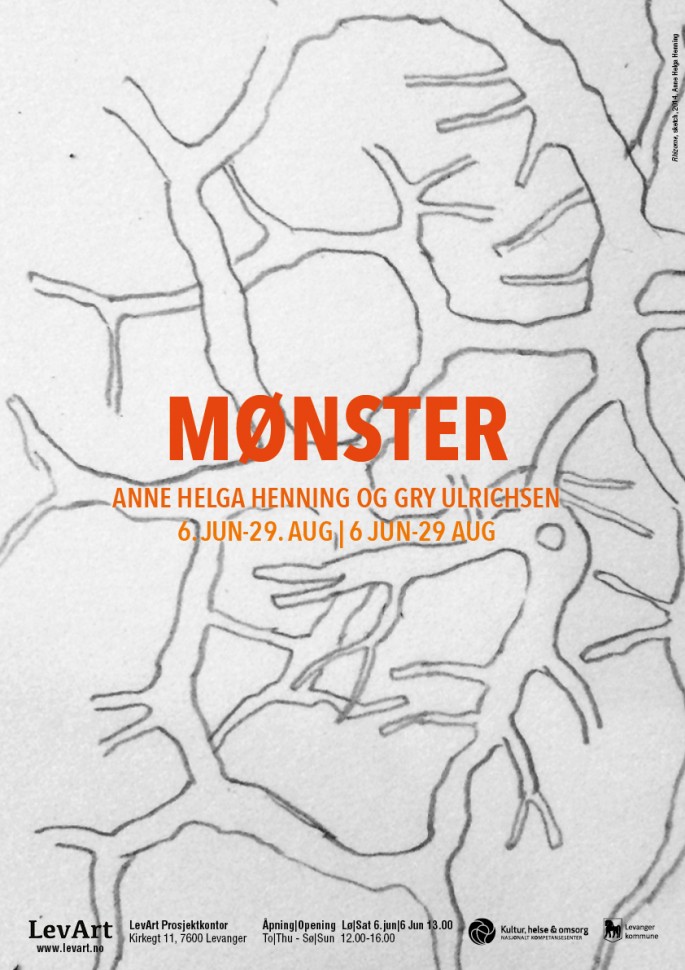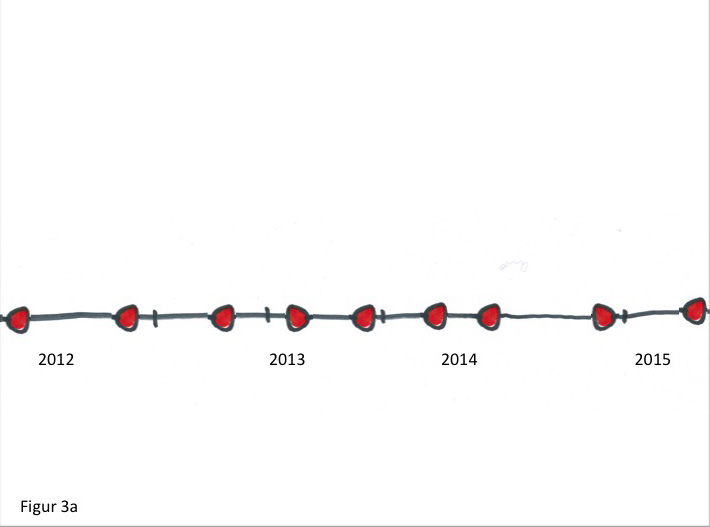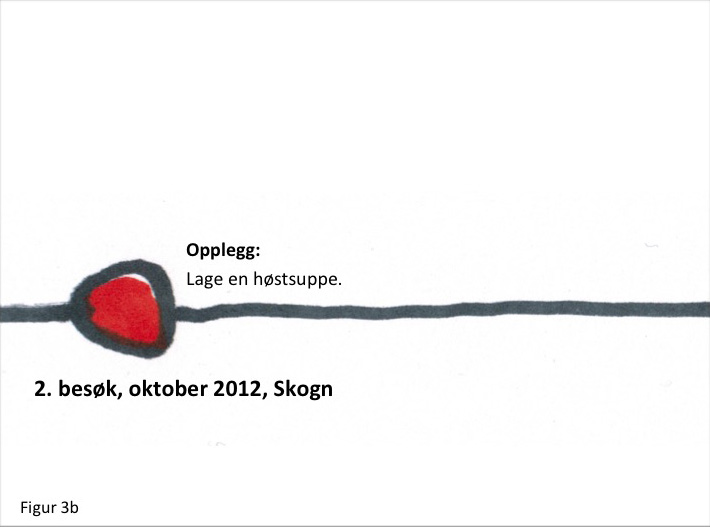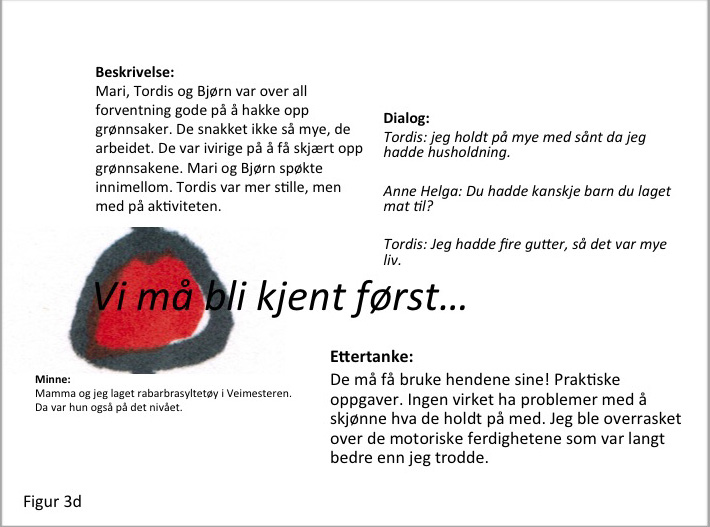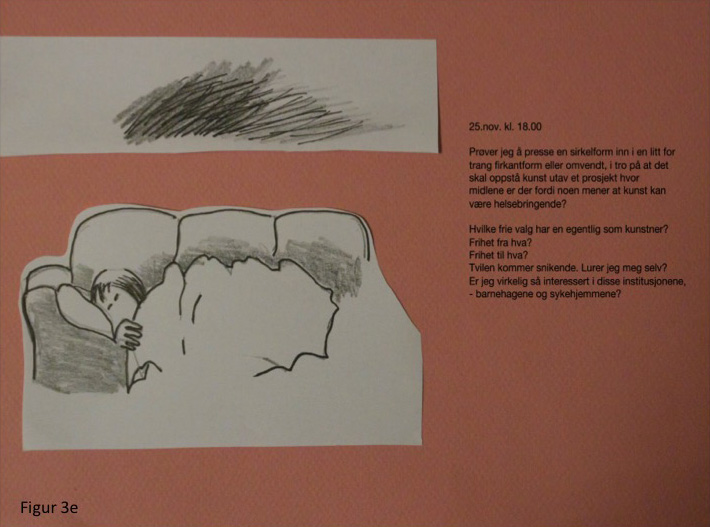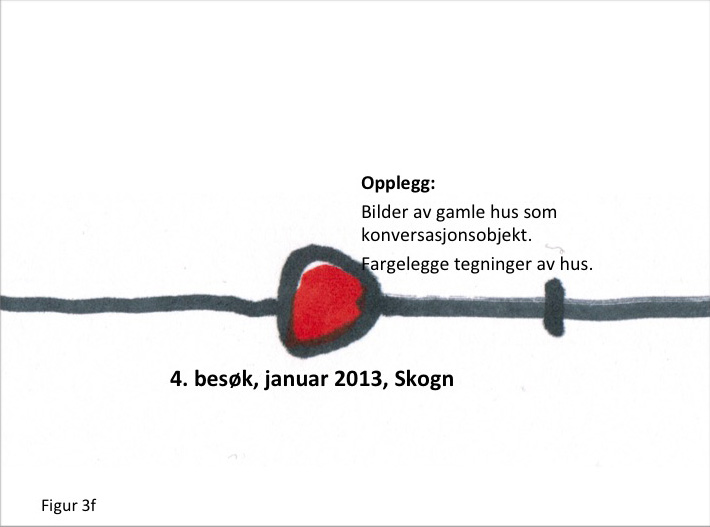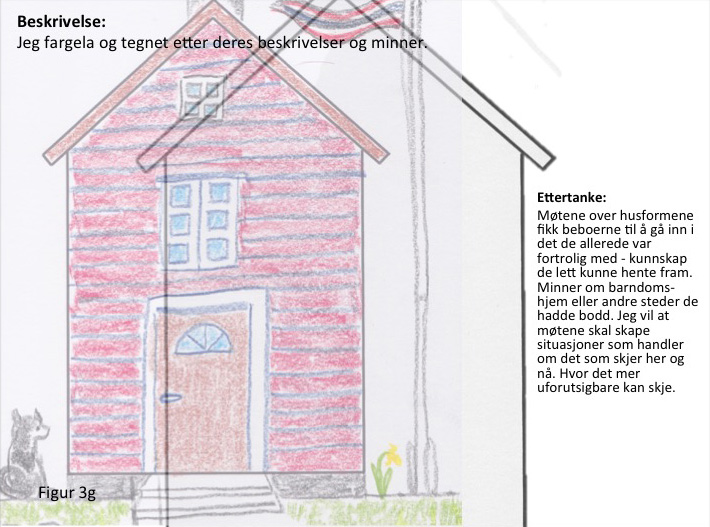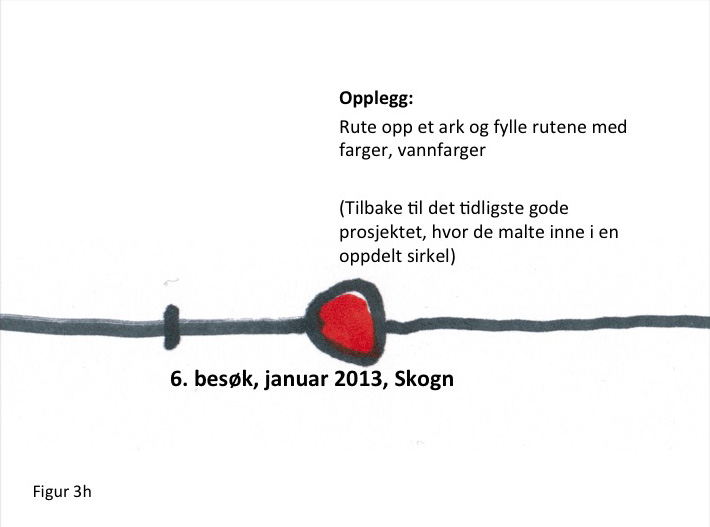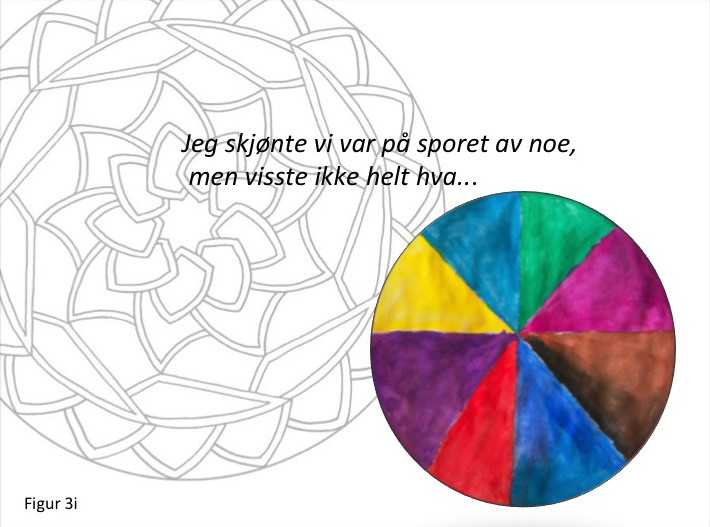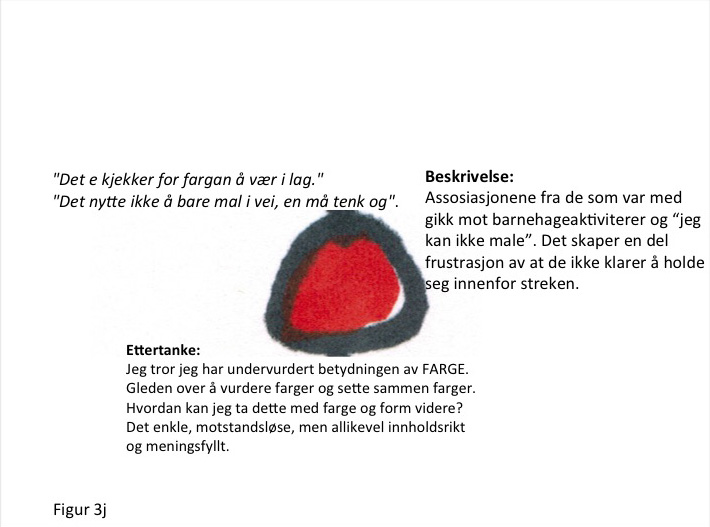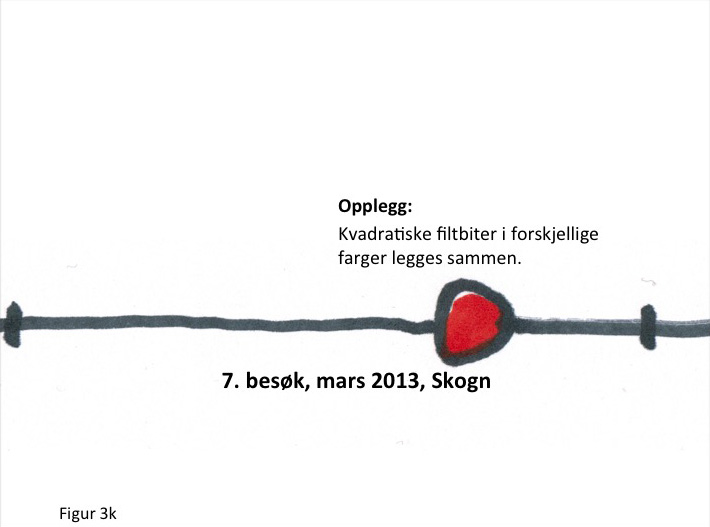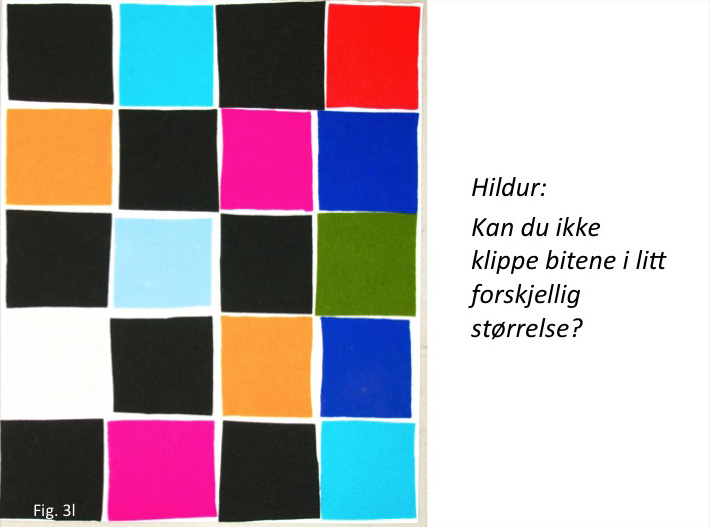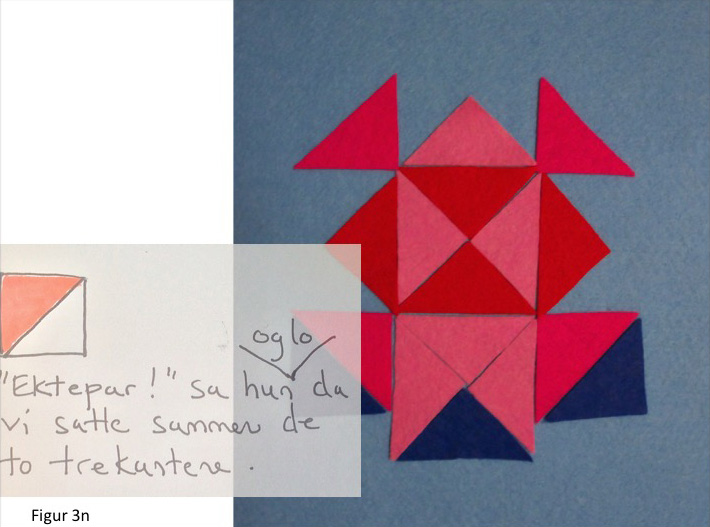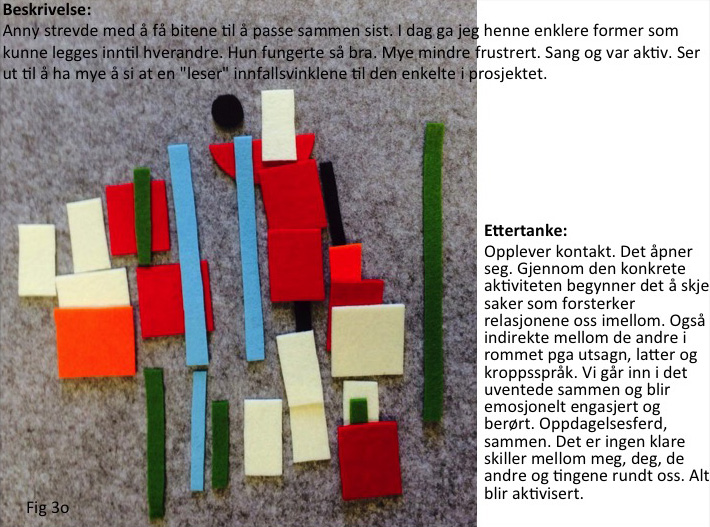Mønster (Patterns)
6 June – 29 Aug 2016
Anne Helga Henning / Gry Ulrichsen
A pattern is a systematic arrangement based on repetition, regularity, symmetry and imitation. A break in the pattern is in line with the idea that growth is the result of breaking habits¹. These two principles are fundamental to the meeting between Anne Helga Henning and Gry Ulrichsen in this exhibition. As for the teacher-artists of the Bauhaus School, the interests and practices of both artists naturally engender a pedagogic approach, a contemporary art didactic in which art is created in immediacy with the social community that makes use of it. Mønster (Patterns) has emerged as a result of Henning’s meetings and praxis with the residents and staff at two health institutions in Levanger municipality, a process Ulrichsen has followed as a researcher. Now that the project moves into an exhibition space, it is in the form of a visual and spatial composition, a “pattern” articulated through various materials, including felt (Henning), and a research paper describing and analyzing the project (Ulrichsen).
Contemporary art didactics entail that all participants are involved in some kind of learning process and mutual exchange. Henning’s poetic documentation of the work at the institution is a methodical and analytical tool in line with Ulrichsen’s research article. By way of Henning’s installation, the exhibition reflects the meetings at the two institutions in a way that leaves room for additional voices. In a video documenting the work at the health centre, we recognize the felt materials in Henning’s wall composition. At the same time, we gain an insight into a joint activity in which geometric forms in different colours are transformed into abstract patterns. The situation unfolds as a negotiation about visual qualities as well as a conversation about everything these are associated with: a horse that bites, new-born children, green meadows, a cigarette. The residents at the institution suffer from dementia, and the activities they are involved in stimulate language – a way of creating memory when images of something familiar from the past come alive. As Ulrichsen puts it in her article: an opportunity to come in touch with, recognize and structure a range of emotions, and lend expression to them without basing the activity on the need to remember something specific or create connections backward or forward in time. This opens up for a sense of intimacy and community, and an affective and sensory response to materials as an entry to the experience of being present².
In autumn 2015, Mønster will provide the basis for a learning arena for health care professionals and students in Levanger. Follow us on our website for updated events during the exhibition period, or contact us directly with your questions.
This project is part of a collaboration between LevArt and the Norwegian Competence Centre for Arts and Health, which investigates different artistic strategies in relation to modern health care institutions. The project is funded by the Norwegian Competence Centre for Arts and Health.
_________
¹This refers to the American philosopher John Dewey (1859–1952).
²”Møter gjennom mønster i filt” (Meetings through patterns in felt) – poetic documentation as the basis and impetus for contemporary art didactic practices in the context of health care, Gry Ulrichsen, 2015
Meetings through patterns in felt – poetic documentation as the basis and impetus for art didactic parctices in the context of health care (Abstract )
by Gry Ulrichsen
Working from an art-didactic perspective, this research project aims to examine how, in a health-care setting, a relational and socially engaged art-practice can be developed to better enable the care and management of those elderly patients suffering from dementia. Because the management of many such patients is currently through the use of psychoactive-mediations (such as anti-psychotics) it is imperative to find alternative, more humane and more respectful methods for the care of such patients. This research project examines one possible avenue for the management of such patients namely, one based on an art-didactic approach. The research is conducted in two institutions, which is a dedicated facility for the care of elderly dementia sufferers.
Download PDF: Meetings through patterns in felt – poetic documentation as the basis and impetus for contemporary art didactic practices in the context of health care – Abstract, Gry Ulrichsen, 2015
_________
Film: Emma Jøsok and Jon Vu-Yen Nguyen
Editing: Emma Jøsok.
Thanks to the residents, staff and families at Skogn and Ytterøy health centres.
Anne Helga Henning (b. 1968) has divided her professional life between working within different techniques related to her own artistic processes, and entering intovarious institutions to run projects based on her meetings with children, young people and the elderly. In addition to her studies at the Trondheim Academy of Fine Art, Henning has studied art history at the University of Bergen, and has trained as an atelierista (studio teacher) at the Reggio Emilia Institute in Stockholm (2011). She has participated in a large number of exhibitions, and has received multiple public art commissions, both as a consultant, as an organizer of larger temporary projects, and as an artist. On two occasions she has been invited to develop projects at St. Olavs Hospital School in Trondheim. In 2009, she received Trondheim municipality’s Ramallah Scholarship, and in 2010 completed a project involving seven to eight-year-olds in the sister cities of Ramallah and Trondheim. She has a permanent 40% position as atelierista at Svartlamon Art and Culture Kindergarten, where she organizes projects based on aesthetic processes. Trondheim’s Svartlamon district is Norway’s first experimental area for urban ecology. Furthermore, over the past 15 years she has gained broad and diverse experience in project work, workshops and mediation at various educational and art institutions.
Gry Ulrichsen (b. 1973) works as an educator, researcher and visual artist. She is a graduate of the Academy of Fine Art in Trondheim, has studied practical pedagogical education (PPU), and has a master’s degree in art didactics from the Norwegian University of Science and Technology (NTNU), Programme for Teacher Education. Her work as an artist has primarily focused on participatory and relational projects in an inter-cultural context, including New Meaning in collaboration with artist Ebba Moi. She has received a number of commissions for art in public spaces, both as a consultant and an artist, and has a broad and versatile background in project work, workshops and dissemination for children and young people at different school levels. Since 2013, she has been engaged in multi-disciplinary projects at the intersection between didactics/pedagogy, art and research, investigating artistic practice in the context of both school education and health care. Key issues centre on the impact of different artistic strategies on the participants in the various fields.
English translation: Thilo Reinhard

